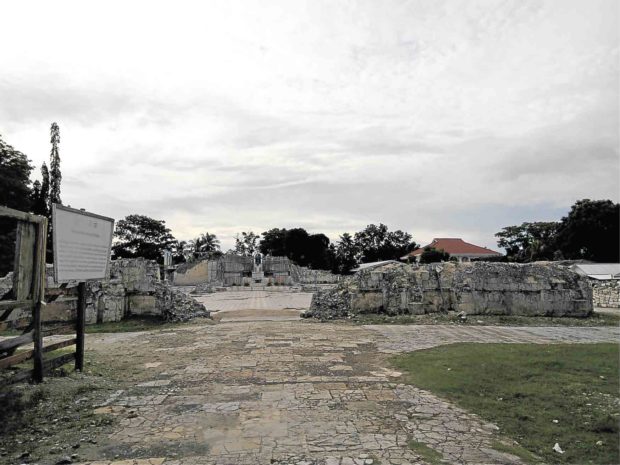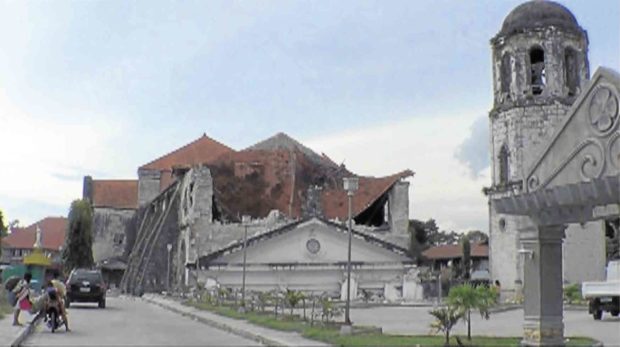Bohol folk regain source of pride

The reconstruction of the Our Lady of Light parish church in Loon town has yet to start. Jeroen Hellingman/www.bohol.ph
TAGBILARAN CITY — Four years after the devastating 7.2-magnitude earthquake struck the province, Boholanos are still haunted by the memory of lost heritage churches.
The feeling was not so much over the loss of lives and property that fateful day on Oct. 15, 2013, but for the incomprehensible destruction of something they had valued so dearly.
One resident of Loon town aptly described the widespread lamentation when the Nuestra Señora de la Luz Parish Church, which was built in 1855, was reduced to rubble.
“I was baptized here, took my First Communion, saw myself graduate from high school, and was married here. Now it’s gone!” engineer James Uy said.
Alma Taldo, conductor of the award-winning Loboc Children’s Choir and a longtime Loboc resident, echoed this feeling while looking blankly at the ruins of their parish church. “This church saw me in all my growing years. So much memories here.”
Article continues after this advertisementMore than pride
Article continues after this advertisementFor most Boholanos, the old churches are not just a source of pride but something akin to a moral and cultural compass as well. Thus, everybody wanted their devastated churches to be rebuilt right away.
Many of the churches have been declared either “national cultural treasures” or “important cultural properties.” This means they could not just be rebuilt or restored without strict monitoring from national heritage bodies.
Immediately after the quake, experts from the National Commission for Culture and the Arts, the National Museum, the National Historical Commission of the Philippines (NHCP) and other government agencies planed in to Bohol to start the tedious process of damage assessment, documentation and retrieval.
Two agencies were eventually given the task of rehabilitation or reconstruction — the National Museum, which was to take care of the severely damaged churches of Loon, Maribojoc, Loboc, Panglao and Dimiao, and the NHCP, for the churches of Dauis, Baclayon and Loay.
It took time for the whole process to take off. A year after the quake, people were grumbling about the lack of clear development in the ruined churches.
The “delay” had been caused by the heritage experts’ insistence of proper procedures, as well as the problem of fund sourcing. Meanwhile, “alternative” places of worship had sprouted in all the stricken parishes, which somehow served to assuage the people.
By the third year, actual reconstruction work had finally taken place, especially in the churches under the care of the NHCP.

The Our Lady of the Immaculate Conception parish church, known as Baclayon Church, is one of the oldest churches. Built in 1595, its portico and bell tower collapsed during the 2013 earthquake. —Leo Udtohan
The National Museum has fully restored two watchtowers in the towns of Maribojoc and Panglao, while wrapping up restoration of the damaged Dimiao church of San Nicolas Tolentino.
It also announced that the restoration project for Loboc church was finally scheduled for bidding.
Four years ago, Boholanos wept over their damaged heritage. If things continued as they were, they would soon be rejoicing over the resurrection of iconic structures that have long been their pride and source of inspiration.
(Marianito Jose M. Luspo is an author, playwright, cultural worker and local historian. He is the director of the Office of Cultural Affairs and Development of Holy Name University.)

The Holy Trinity church in Loay town has been turned over by the National Historical Commission of the Philippines to parish officials this month after its rehabilitation. —LEO UDTOHAN